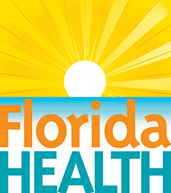It's a New Day in Public Health.
The Florida Department of Health works to protect, promote, and improve the health of all people in Florida through integrated state, county, and community efforts.
Make a Plan
Contact: Florida Health
- 850-245-4444
- health@flhealth.gov
-
Mailing Address
Florida Health
4052 Bald Cypress Way
Tallahassee, FL 32399
Preparing for Emergencies

Emergencies can strike at any moment, and waiting until disaster hits is too late to prepare. Creating a plan now ensures you and your loved ones know what to do when the unexpected occurs. A well-thought-out plan reduces panic, keeps your family together, and ensures access to essential resources. Whether facing a natural disaster, power outage, or other emergency, being organized can make all the difference.
The steps below will help you create a comprehensive emergency plan, covering communication, evacuation, and essential preparations to keep your family safe and ready for any situation.
- Step 1: Identify Who and What Your Plan Covers
- Step 2: Communication & Contacts
- Step 3: Know Your Evacuation Plan
- Step 4: Designate Meeting Places
- Step 5: Keep Important Documentation Accessible
- Step 6: Review, Practice, and Update Your Plan
- Step 7: Plan for Pets and Service Animals
List all individuals in your household and their full contact information.
Note any medical conditions, mobility limitations, or other special needs.
Include service animals and family pets in your plan.
Assign responsibilities to each household member so everyone has a role in an emergency.
Designate a central emergency contact outside of your immediate area.
Ensure everyone in your household has this contact’s phone number, email, and address.
Establish a method for checking in with family members if separated.
Know how to send and receive emergency alerts via phone, text, or social media.

Identify primary and alternate evacuation routes from your home and neighborhood.
Decide where you will go: a friend’s or relative’s home, a hotel, or an emergency shelter.
If someone in your household has medical needs, check if a Special Needs shelter is an option.
Keep your vehicle maintained and your gas tank at least half-full in case of evacuation.
Establish two meeting locations: one near your home and one outside your neighborhood.
Ensure all family members know where these locations are and how to get there.
If evacuation occurs, update your designated emergency contact on your whereabouts.
Make copies of important documents, such as identification, insurance policies, and medical records.
Store copies in a waterproof container and keep digital versions backed up securely.
Ensure each family member always carries identification and emergency contact details.
Review and practice your emergency plan with all household members every six months.
Conduct fire and emergency evacuation drills regularly.
Test communication methods to ensure they work effectively.
Update contact information, routes, and meeting places as needed.

Identify pet-friendly shelters, hotels, or friends’ homes in advance.
Ensure pets have identification tags with your contact information.
Keep updated vaccination records and make sure they are accessible.
Stay Ready, Stay Safe
By following these steps, you’re taking proactive measures to protect yourself and your loved ones in an emergency. A strong plan isn’t just about having a checklist—it’s about staying informed, practicing your response, and adapting as needed. Regularly reviewing your plan ensures it remains effective, giving you confidence in any situation. Preparedness is more than just a precaution; it’s a commitment to safety, resilience, and peace of mind. Act today so you’re ready for whatever tomorrow may bring.
Another key component of emergency preparedness is building a well-stocked emergency kit. Having the right supplies on hand ensures you can handle situations like power outages, evacuations, or long-term disruptions. Find out what items to include and how to create a kit that meets your unique needs by visiting our Build a Kit page.
Resources
Ready.gov – Make a Plan
This official website from the U.S. Department of Homeland Security provides step-by-step guidance on creating emergency plans for families, individuals, and businesses.
CDC Plan Ahead
The CDC's "Plan Ahead" section provides guidance on creating personalized emergency plans to ensure health and safety during disasters.
American Red Cross – Make an Emergency Plan
The American Red Cross provides detailed instructions on making an emergency plan, including how to prepare for evacuation, communication, and essential supplies.
Disclaimer: The links and content provided on this page are for informational purposes and your convenience. The Florida Department of Health (DOH) does not endorse, approve, or guarantee the products, services, or opinions offered on external websites. Furthermore, the DOH is not responsible for the accuracy, content, or availability of these external sites. For questions or concerns, please contact the external site directly.



Connect with DOH